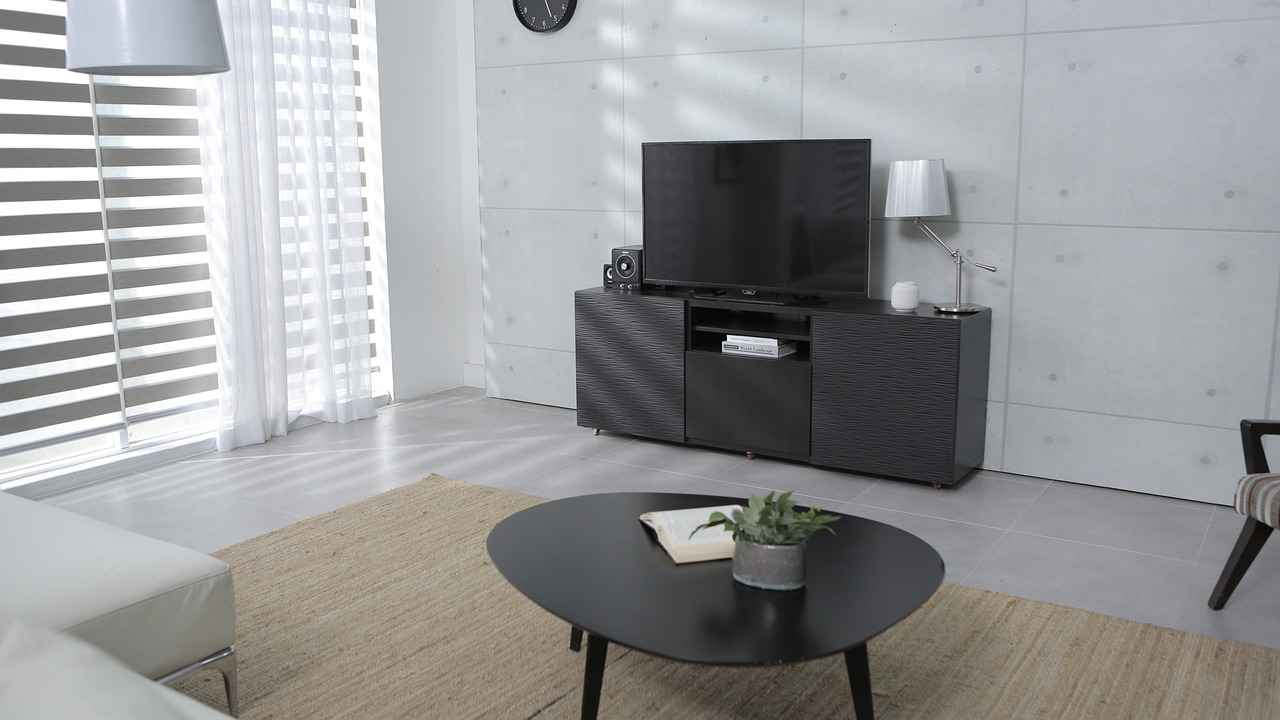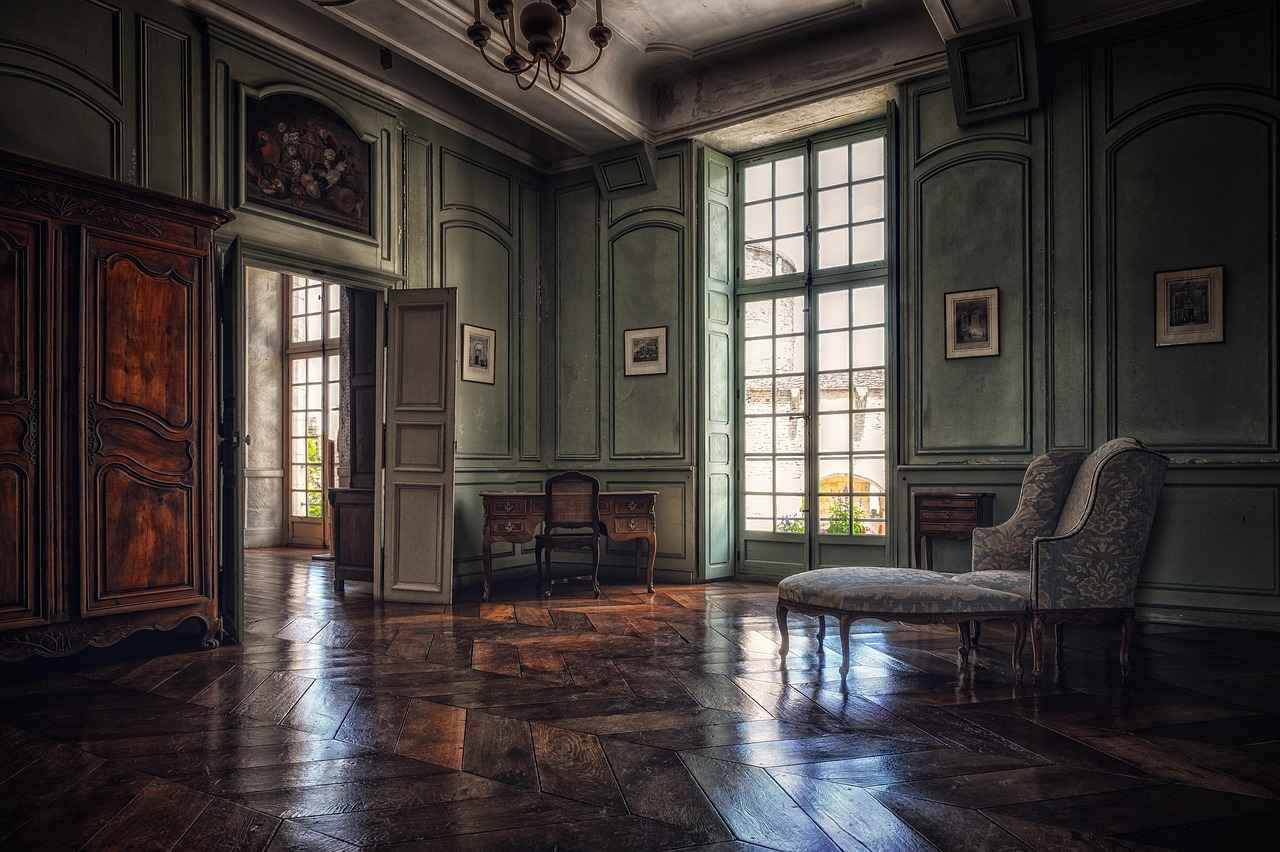This article explores budget-friendly DIY room divider ideas that can enhance your living space without breaking the bank. Discover creative solutions that are both functional and stylish.
DIY room dividers offer numerous advantages, including cost-effectiveness, customization, and the ability to create private spaces. By using a DIY approach, you can tailor the design to fit your personal style and specific needs. These dividers can easily transform open areas into cozy nooks or separate spaces for work and relaxation.
Selecting the appropriate materials is crucial for the durability and aesthetic of your room divider. Consider options such as:
- Wood: Provides sturdiness and a classic look.
- Fabric: Offers softness and flexibility in design.
- Cardboard: An inexpensive and lightweight choice for temporary dividers.
Explore these materials to find the best fit for your space and budget.
Explore innovative and practical DIY room divider ideas that you can create for under $20. These projects will inspire you to enhance your space creatively:
Bookshelves can serve as both functional and stylish dividers while providing valuable storage. Repurpose old shelves into eye-catching dividers that also display your favorite books and decorative items.
Curtains offer a flexible and easy-to-install option for room dividers. You can hang them from a ceiling track or a tension rod to create distinct areas in your home. Choose fabrics that complement your decor for a cohesive look.
Proper assembly is key to ensuring your room divider is stable and functional. Follow these steps:
- Drill: For securing parts together.
- Screwdriver: Essential for tightening screws.
- Measuring tape: To ensure accurate dimensions.
A clear assembly guide will help you put your divider together with ease. For example:
1. Measure your space and mark where the divider will go.2. Cut your materials to the desired size.3. Assemble the frame or structure using screws and brackets.4. Add any decorative elements, such as paint or fabric.5. Secure the divider in place and make adjustments as needed.
Once your room divider is complete, proper maintenance will ensure its longevity. Here are some essential care tips:
- Regular Dusting: Keep your divider clean by dusting it regularly.
- Check Stability: Periodically check screws and joints for stability.
- Refresh Finishes: Repaint or restain wooden dividers as needed.
By following these simple tips, you can keep your DIY project looking fresh and new over time.

What Are the Benefits of Using DIY Room Dividers?
DIY room dividers are becoming increasingly popular among homeowners seeking to enhance their living spaces without incurring hefty costs. These versatile solutions not only help in defining areas within a room but also add a touch of creativity and personalization. Below, we explore the benefits of using DIY room dividers and how they can transform your home environment.
- Cost-Effectiveness: One of the most significant advantages of DIY room dividers is their affordability. With a budget of under $20, you can create functional and stylish dividers using materials like cardboard, fabric, or repurposed furniture. This is a fraction of the cost compared to purchasing pre-made dividers.
- Customization: DIY projects allow for complete customization. You can choose colors, patterns, and designs that align with your personal style and home decor. Whether you prefer a minimalist look or something more eclectic, the possibilities are endless.
- Creating Private Spaces: In open-concept homes or shared living spaces, privacy can be a concern. DIY room dividers can effectively create intimate areas for relaxation, work, or study. By strategically placing a divider, you can carve out a cozy nook without the need for permanent walls.
- Functional Use: Many DIY room dividers serve dual purposes. For instance, a bookshelf can act as a divider while also providing storage for books, plants, or decorative items. This functionality maximizes space efficiency and adds to the room’s aesthetic.
- Easy to Install: Most DIY room dividers are designed for easy assembly and installation. With basic tools and materials, you can set up your divider in no time, making it a hassle-free project.
- Eco-Friendly Options: Many DIY enthusiasts opt for sustainable materials, such as reclaimed wood or recycled fabrics. This not only reduces waste but also contributes to a more environmentally conscious home.
- Enhancing Aesthetics: A well-designed room divider can serve as a focal point in your home. By incorporating unique designs or artistic elements, you can elevate the overall look of your space.
In conclusion, DIY room dividers offer a plethora of benefits that cater to both functionality and style. From cost savings to customization, these dividers can significantly enhance the way you utilize your living space. Embrace your creativity and transform your home with a DIY room divider that suits your needs and reflects your personality.

How to Choose the Right Materials for Your Divider?
When embarking on a DIY room divider project, choosing the right materials is essential for both durability and aesthetic appeal. The materials you select will not only determine the overall look of your divider but also its functionality and longevity. In this section, we will explore various options, including wood, fabric, and cardboard, to help you make an informed decision.
The material you choose influences the sturdiness, maintenance, and style of your room divider. Different materials can create distinct atmospheres in your space, from cozy and inviting to sleek and modern. Additionally, understanding the characteristics of each material will aid in ensuring that your divider withstands the test of time.
Wood is a classic choice for room dividers due to its strength and versatility. Here are some points to consider:
- Durability: Wooden dividers are generally long-lasting, making them a great investment.
- Aesthetic Appeal: Wood can be stained or painted to match your decor, providing a warm and inviting atmosphere.
- Types of Wood: Options like plywood, pine, and reclaimed wood each offer unique textures and finishes.
If you prefer a more flexible and lightweight option, fabric dividers might be the way to go. They come with their own set of advantages:
- Easy Customization: Fabrics can be easily changed or updated to reflect your style.
- Sound Absorption: Fabric can help reduce noise, making your space feel more private.
- Variety of Patterns: From bold prints to subtle textures, the options are endless.
For those on a tight budget, cardboard can be a surprisingly effective material for temporary dividers:
- Cost-Effective: Cardboard is inexpensive and can be repurposed easily.
- Lightweight: It’s easy to move and rearrange as needed.
- Creative Potential: You can paint or decorate cardboard to fit your aesthetic.
When deciding which material to use, consider the following factors:
- Purpose: Determine whether you need a permanent divider or something more temporary.
- Environment: Consider the humidity and temperature of the space, as these can affect different materials.
- Style: Ensure that the material aligns with your overall decor theme.
Ultimately, the choice of material for your room divider should reflect both your functional needs and your personal style. By weighing the pros and cons of each option, you can create a beautiful and practical divider that enhances your living space.
Wooden Room Dividers: Pros and Cons
Wooden room dividers are a popular choice among DIY enthusiasts due to their sturdiness and versatility. However, like any material, they come with their own set of advantages and disadvantages. Understanding these factors is essential for making an informed decision for your DIY project.
- Durability: Wooden dividers are known for their strength and longevity. Unlike fabric or cardboard options, wood can withstand wear and tear, making it a worthwhile investment.
- Customization: Wood can be easily cut, painted, or stained to match your home’s decor. This allows for a high level of personalization that can enhance the aesthetic appeal of your space.
- Sound Insulation: Wooden dividers can help reduce noise between rooms, providing a quieter environment, which is particularly beneficial in shared living spaces.
- Eco-Friendliness: If sourced responsibly, wood can be a sustainable option, especially if you choose reclaimed wood or certified sustainable timber.
- Cost: One of the primary drawbacks of wooden dividers is their price. Quality wood can be expensive, which might not fit into a tight budget.
- Weight: Wooden dividers tend to be heavier than their fabric or cardboard counterparts, making them more challenging to move or install.
- Maintenance: Wood requires regular upkeep to prevent damage from moisture and pests. This may involve periodic sealing or refinishing, adding to long-term costs.
- Limited Flexibility: Unlike curtains or fabric dividers, wooden dividers are fixed installations. This can limit your ability to reconfigure your space easily.
When selecting wood for your room divider, consider factors such as budget, style, and availability. Common choices include:
| Type of Wood | Characteristics | Cost |
|---|---|---|
| Plywood | Lightweight, versatile, and cost-effective | Low to moderate |
| Solid Wood | Durable and aesthetically pleasing | Moderate to high |
| Reclaimed Wood | Unique character and eco-friendly | Variable |
Applying a finish to your wooden divider can significantly enhance its appearance and durability. Here are some popular techniques:
- Staining: This technique enhances the natural grain of the wood while providing a protective layer.
- Painting: A coat of paint can transform the look of your divider and allow it to fit seamlessly into your decor.
- Sealing: Applying a sealant helps protect the wood from moisture and damage, extending its life.
In summary, while wooden room dividers offer a range of benefits such as durability and customization, they also come with challenges like cost and maintenance. By carefully considering these factors, you can make a well-informed choice that suits your DIY project and enhances your living space.
Types of Wood for DIY Dividers
When it comes to creating a DIY room divider, the choice of materials plays a crucial role in both aesthetics and functionality. Among the various options available, wood stands out as a popular choice due to its versatility and natural beauty. In this section, we will explore the different types of wood suitable for DIY dividers, focusing on their unique characteristics, advantages, and potential drawbacks.
- Plywood: Plywood is made from thin layers of wood veneer glued together. It is known for its strength and durability, making it an excellent choice for room dividers. Additionally, plywood is relatively inexpensive, allowing you to create a stylish divider without overspending. Its smooth surface can be easily painted or stained to match your decor.
- Reclaimed Wood: Using reclaimed wood is not only eco-friendly but also adds a unique charm to your space. Each piece comes with its own history and character, which can enhance the aesthetic appeal of your divider. However, reclaimed wood may require more preparation and finishing work to ensure it is safe and visually appealing.
- Solid Wood: Solid wood, such as oak, pine, or maple, offers a classic and timeless look. It is sturdy and can be crafted into intricate designs. However, solid wood can be more expensive than other options, and it may require regular maintenance to prevent warping or damage from moisture.
- Particleboard: An economical choice, particleboard is made from wood chips and resin. While it is less durable than solid wood, it can be a good option for lightweight dividers. It is essential to note that particleboard may not hold up as well over time, especially in high-traffic areas.
- Bamboo: Bamboo is a sustainable and eco-friendly option that is gaining popularity in home decor. It is lightweight yet strong, making it suitable for portable dividers. Bamboo also has a unique aesthetic that can complement modern and minimalist designs.
The cost of your DIY room divider can vary significantly depending on the type of wood you choose. Plywood and particleboard are typically more affordable, making them ideal for budget-conscious projects. In contrast, solid wood options, while offering superior quality and durability, can increase your overall costs. Additionally, reclaimed wood may come at a premium, depending on its source and condition.
When selecting wood for your DIY room divider, consider the following factors:
- Durability: Think about how often the divider will be moved or adjusted. Sturdier woods like solid wood or plywood are better suited for frequent use.
- Aesthetic Appeal: Choose a wood type that complements your existing decor. Reclaimed wood offers a rustic charm, while bamboo provides a modern touch.
- Maintenance: Some woods require more upkeep than others. Solid wood may need regular polishing, while plywood is generally easier to maintain.
- Environmental Impact: If sustainability is important to you, consider using reclaimed wood or bamboo, both of which are environmentally friendly options.
In conclusion, understanding the different types of wood available for DIY dividers can greatly influence the final look, functionality, and cost of your project. By considering factors such as durability, aesthetic appeal, and maintenance needs, you can choose the perfect wood that aligns with your vision and budget.
Finishing Techniques for Wooden Dividers
When it comes to enhancing the beauty of your wooden dividers, finishing techniques play a crucial role. Applying finishes like paint or stains not only improves the aesthetic appeal but also protects the wood from wear and tear. In this section, we will explore various finishing techniques that can help you achieve a professional look on a budget.
Finishing your wooden dividers can significantly elevate their appearance. Here are some key reasons why you should consider applying finishes:
- Protection: Finishes act as a barrier against moisture, dirt, and UV rays, prolonging the life of the wood.
- Aesthetic Appeal: A well-finished divider can enhance the overall design of your space, making it more inviting.
- Customization: Finishes allow you to customize the color and texture to match your decor.
There are several types of finishes available, each with its unique benefits:
- Paint: Provides a wide range of color options and a smooth finish. It is perfect for those looking to add a pop of color to their space.
- Stains: Enhance the natural grain of the wood while adding a subtle hue. Stains are ideal for those who want to maintain a natural look.
- Varnish: Offers a hard protective layer that is resistant to scratches and moisture, making it suitable for high-traffic areas.
- Oil Finishes: Penetrate deep into the wood, providing nourishment and a natural look. They are easy to apply and maintain.
To achieve a professional finish, consider the following techniques:
- Preparation: Properly sand the surface of the wood to remove any imperfections. Start with a coarse grit and gradually move to a finer grit for a smooth finish.
- Clean the Surface: After sanding, wipe the wood with a damp cloth to remove dust and debris. This ensures better adhesion of the finish.
- Application: Use a high-quality brush or roller for applying paint or stain. For varnish, a foam brush can help achieve a smooth application.
- Multiple Coats: Applying multiple thin coats rather than one thick coat can help avoid drips and achieve a more even finish.
- Drying Time: Allow adequate drying time between coats as recommended by the product instructions to ensure optimal results.
Finishing your wooden dividers doesn’t have to be expensive. Here are some budget-friendly tips:
- DIY Finishes: Consider making your own stains using natural ingredients like coffee or tea for a unique look.
- Buy in Bulk: Purchase finishes in larger quantities to save money over time.
- Use Leftover Materials: If you have leftover paint or stain from other projects, use them on your dividers to minimize costs.
In conclusion, applying finishes like paint or stains can greatly enhance the appearance of your wooden dividers while providing protection. By using the right techniques and materials, you can achieve a professional look without exceeding your budget. Embrace your creativity and transform your space with beautifully finished wooden dividers!
Fabric Room Dividers: A Soft Touch
Fabric room dividers are an excellent choice for those looking to create a cozy and inviting atmosphere in their living spaces. These dividers not only enhance the aesthetic appeal of a room but also provide a practical solution for dividing spaces without the permanence of walls. In this section, we will explore the various fabric options available and how to create a stunning divider that reflects your personal style.
Fabric dividers offer several benefits:
- Softness and Warmth: Unlike hard materials, fabric adds a touch of warmth to any space, making it feel more inviting.
- Customization: With a plethora of colors, patterns, and textures available, you can easily customize your divider to match your decor.
- Flexibility: Fabric dividers can be moved or adjusted as needed, allowing for versatile room arrangements.
- Sound Absorption: Fabric can help dampen noise, creating a quieter environment.
When selecting fabric for your room divider, consider the following options:
- Cotton: A popular choice for its versatility and ease of care. Cotton fabric is available in various prints and colors.
- Canvas: Durable and sturdy, canvas is ideal for more structured dividers that require stability.
- Linen: Known for its elegant look, linen adds a touch of sophistication but may require more maintenance.
- Sheer Fabrics: Perfect for creating a light and airy feel, sheer fabrics allow natural light to filter through while still providing a sense of separation.
Creating a fabric room divider is a simple and enjoyable DIY project. Follow these steps:
1. Gather materials: fabric, a tension rod or curtain rod, and mounting hardware.2. Measure the space where you want to install the divider.3. Cut the fabric to your desired length, allowing for hemming.4. Hem the edges of the fabric to prevent fraying.5. Install the tension rod or curtain rod securely.6. Hang the fabric, adjusting it as necessary to achieve the desired look.
To enhance the overall look of your fabric divider, consider the following styling tips:
- Layering: Mix different fabrics or patterns for a more dynamic appearance.
- Accessorizing: Add decorative elements like fairy lights or hanging plants to create a unique focal point.
- Seasonal Changes: Swap out fabrics with the seasons to refresh your space regularly.
To keep your fabric divider looking its best:
- Regular Cleaning: Depending on the fabric, regular vacuuming or washing may be necessary to maintain its appearance.
- Check for Damage: Inspect the fabric and hardware periodically to ensure everything remains in good condition.
- Store Properly: If you decide to change the divider, store it in a cool, dry place to prevent damage.
Fabric room dividers are a fantastic way to add style and functionality to your home. With various fabric options and creative ideas, you can easily create a divider that suits your taste and enhances your living space.

What Are Some Creative DIY Room Divider Ideas?
When it comes to enhancing your living space, creativity knows no bounds. DIY room dividers are an excellent way to create distinct areas in your home without spending a fortune. With a budget of under $20, you can explore a variety of innovative and practical ideas that not only serve as functional partitions but also add a touch of style to your decor.
- Repurposed Pallet Dividers: Old wooden pallets can be transformed into rustic room dividers with minimal effort. Simply sand them down and apply a coat of paint or stain to match your decor. Stack them vertically or horizontally to create a unique look.
- Fabric Panels: Use tension rods and your favorite fabric to create soft, flowing dividers. This option is not only affordable but also allows for easy customization. Choose patterns that complement your existing decor to achieve a cohesive look.
- Hanging Macramé: For a bohemian vibe, consider macramé hangings as room dividers. These intricate designs can be made using inexpensive cotton rope and can be hung from the ceiling to create a stunning visual effect.
- DIY Bookshelf Dividers: If you have old bookshelves lying around, repurpose them as room dividers. They provide both privacy and storage, allowing you to display your favorite books and decorative items while separating spaces.
- Cardboard Dividers: For a temporary solution, cardboard can be an excellent choice. Cut large pieces to your desired shape, paint them, and use them to create a fun and lightweight divider. This is especially useful for kids’ play areas.
Enhancing your DIY room divider can elevate its functionality and aesthetics. Here are some tips:
- Add Shelves or Hooks: Incorporating shelves or hooks into your divider can provide additional storage and display options. This is particularly useful for smaller spaces where every inch counts.
- Incorporate Lighting: Adding LED strip lights or fairy lights can transform your divider into a stunning focal point. This creates a warm ambiance and highlights the beauty of your DIY project.
- Use Plants: Integrating plants into your divider not only enhances its visual appeal but also improves air quality. Consider hanging planters or using potted plants at the base of your divider.
Choosing the right materials is essential for both the durability and appearance of your room divider. Here are some popular options:
- Wood: Sturdy and versatile, wood is a classic choice for room dividers. Consider reclaimed wood for an eco-friendly option that adds character to your space.
- Fabric: Lightweight and easy to work with, fabric can be used to create soft dividers that can be opened or closed as needed.
- Cardboard: An inexpensive and lightweight option, cardboard can be used for temporary dividers or for kids’ play areas.
With these creative ideas and tips, transforming your space with DIY room dividers can be an enjoyable and fulfilling project. Whether you opt for a rustic wooden divider or a soft fabric panel, the possibilities are endless. Get started today and let your creativity shine!
Using Bookshelves as Room Dividers
When it comes to maximizing space in your home, bookshelves can be a game-changer. Not only do they provide essential storage for your beloved books, but they can also serve as stylish room dividers that enhance the overall aesthetic of your living area. In this section, we will explore how to repurpose old shelves into eye-catching dividers that not only separate spaces but also display your favorite reads.
Bookshelves are an excellent choice for room dividers due to their versatility and functionality. Here are some benefits:
- Storage Solution: They provide ample space for books, decor, and personal items.
- Visual Appeal: A well-organized bookshelf can be a stunning focal point in any room.
- Customization: You can easily paint or style your bookshelf to match your existing decor.
If you have an old bookshelf lying around, consider giving it a new lease on life. Here’s how:
- Clean and Repair: Start by cleaning the shelf and making any necessary repairs. Ensure that it is sturdy enough to stand as a divider.
- Choose the Right Location: Identify the area where you want to place the divider. Ensure it provides the desired separation while allowing light to pass through.
- Style It Up: Paint or stain the bookshelf to complement your room’s color scheme. You can also add decorative items or plants to enhance its appeal.
Here are some creative design ideas to inspire your bookshelf divider project:
- Open Shelves: Use open bookshelves to create a sense of openness while still dividing spaces.
- Backlit Shelves: Incorporate LED lights to highlight your favorite books and add ambiance.
- Mixed Use: Combine books with decorative items like vases or framed photos for a more personalized look.
Once your bookshelf is in place, regular maintenance will keep it looking fresh:
- Dust Regularly: Keep your books and decor dust-free to maintain their appearance.
- Check Stability: Periodically ensure that the bookshelf remains stable and secure.
- Rearrange Items: Change the layout of books and decor to keep the look dynamic and interesting.
In summary, using bookshelves as room dividers is a practical and stylish solution for enhancing your living space. They not only provide essential storage but also allow you to express your personal style. With a little creativity and effort, you can transform an old bookshelf into a stunning divider that showcases your favorite books while adding character to your home.
Hanging Curtains for Flexibility
Hanging curtains is a popular and versatile method for creating distinct spaces in your home without the need for permanent structures. Whether you’re looking to separate a living area from a dining space or create a cozy nook in a larger room, curtains can be your best friend. They are not only affordable but also allow for easy customization, making them an ideal choice for any DIY enthusiast.
Using curtains as room dividers comes with several benefits. Firstly, they are cost-effective; you can find a variety of options that fit within a limited budget. Secondly, curtains are easy to install and can be hung using simple tools. Lastly, they offer flexibility—you can easily open or close them as needed, allowing for a dynamic living space.
When selecting curtains for your room divider, consider the following options:
- Sheer Curtains: These allow light to filter through while providing a sense of separation.
- Blackout Curtains: Ideal for creating private spaces, these curtains block out light completely.
- Patterned or Textured Curtains: Adding visual interest, these can serve as a decorative element in your room.
To achieve a polished look when hanging curtains, follow these steps:
- Measure Your Space: Determine the width and height of the area where you want to hang the curtains. This ensures that your curtains will fit perfectly.
- Select the Right Rod: Choose a curtain rod that complements your decor and can support the weight of your chosen curtains.
- Install Brackets: Secure the brackets to the wall at the appropriate height, ensuring they are level for a professional finish.
- Hang the Curtains: Slide the curtains onto the rod and place the rod into the brackets. Adjust as necessary for even draping.
To enhance the aesthetic appeal of your curtain dividers, consider these styling tips:
- Layering: Combine different types of curtains, such as sheer and blackout, for added texture and functionality.
- Accessorizing: Use decorative tiebacks or clips to hold curtains open, adding a stylish touch.
- Color Coordination: Choose colors that complement your existing decor to create a cohesive look.
To keep your curtain dividers looking fresh and new:
- Regular Cleaning: Wash or vacuum your curtains as needed to remove dust and allergens.
- Check Hardware: Periodically inspect the curtain rod and brackets to ensure they are secure.
- Replace as Necessary: If curtains become faded or damaged, consider replacing them to maintain the look of your space.
In conclusion, hanging curtains as room dividers is a practical and affordable solution for enhancing your living space. With the right materials and installation techniques, you can create beautiful, functional areas in your home that reflect your unique style.

How to Assemble Your DIY Room Divider?
Assembling your DIY room divider is an essential step to ensure that it is both stable and functional. Whether you are using wood, fabric, or other materials, following a clear and structured assembly process will help you achieve the best results. Below are detailed insights and step-by-step instructions to guide you through the assembly of various types of room dividers.
Before you begin, it’s crucial to gather the right tools to make the assembly process smoother. Here’s a list of essential tools:
- Screwdriver – For tightening screws and securing components.
- Drill – Useful for making holes and driving screws into the material.
- Measuring Tape – To ensure accurate dimensions and placements.
- Level – To check that your divider is perfectly upright.
- Clamps – For holding pieces together while you secure them.
Follow these steps to assemble your DIY room divider efficiently:
- Prepare Your Workspace: Clear a large area where you can spread out your materials and tools. Ensure you have good lighting.
- Measure and Cut Materials: Use your measuring tape to mark the dimensions of your divider. Cut your materials accordingly, ensuring all pieces are uniform.
- Assemble the Frame: Start by constructing the frame of your divider. If using wood, secure the corners with screws or brackets. For fabric dividers, attach the fabric to a wooden or metal frame.
- Install Additional Features: If your divider includes shelves or decorative elements, now is the time to attach them. Ensure they are secured properly to support weight.
- Check Stability: Use a level to ensure your divider is straight. Make any necessary adjustments before finalizing the assembly.
- Finish and Decorate: Once assembled, you can paint or stain wooden dividers or add decorative elements to fabric ones. This step adds a personal touch to your project.
While assembling your room divider, be mindful of these common mistakes:
- Skipping Measurements: Always double-check your measurements before cutting to avoid wasting materials.
- Neglecting Stability: Ensure all components are securely fastened; a wobbly divider can be a safety hazard.
- Ignoring Aesthetics: Don’t forget to consider how your divider will look in your space. Take the time to add finishing touches that match your decor.
By following these steps and tips, you can create a beautiful and functional room divider that enhances your living space. Remember, proper assembly is not just about putting pieces together; it’s about ensuring that your divider serves its purpose effectively while also being a stylish addition to your home.
Tools You’ll Need for Assembly
When embarking on your DIY room divider project, having the right tools is essential for a smooth and efficient assembly process. By gathering the appropriate tools beforehand, you can save time and avoid frustration during the construction phase. Here’s a comprehensive guide on the essential tools you’ll need to assemble your room divider effectively.
Before you start, ensure you have the following tools readily available:
- Measuring Tape: Accurate measurements are crucial for cutting materials to the right size.
- Level: To ensure your divider is straight and properly aligned.
- Power Drill: A versatile tool for making holes and driving screws quickly.
- Screwdriver: Essential for assembling parts and securing components.
- Hammer: Useful for driving nails and making adjustments during assembly.
- Utility Knife: Ideal for cutting fabric or cardboard materials with precision.
- Sandpaper: To smooth out rough edges on wooden components.
- Clamps: Helpful for holding pieces together while the glue dries or while you secure them with screws.
- Safety Gear: Always wear safety goggles and gloves to protect yourself while working.
Understanding the role of each tool can help you appreciate their importance in the assembly process:
- Measuring Tape: Ensures that your cuts are precise, preventing material wastage and ensuring a perfect fit.
- Level: A level helps you avoid crooked dividers, which can detract from the overall aesthetic of your space.
- Power Drill: Speeds up the process of creating holes and driving screws, making assembly much more efficient.
- Screwdriver: Necessary for tightening screws, which keeps your divider sturdy and secure.
- Hammer: A hammer is essential for quick adjustments and can help in fitting pieces together snugly.
- Utility Knife: Perfect for cutting fabric or other materials smoothly, ensuring clean edges.
- Sandpaper: Smooths rough edges on wood, preventing splinters and giving your divider a polished look.
- Clamps: Hold materials in place, allowing for hands-free work while you secure them.
- Safety Gear: Protects you from potential injuries, ensuring a safe working environment.
To make your assembly process even smoother, consider organizing your tools:
- Toolbox: Store smaller tools in a toolbox for easy access.
- Workstation: Set up a dedicated workstation where all tools are within reach.
- Labeling: Label your tools and materials to quickly identify what you need.
By having the right tools and organizing them effectively, you can streamline your DIY project and ensure a successful assembly of your room divider. This preparation will not only save you time but also enhance the quality of your work, making your DIY experience enjoyable and rewarding.
Step-by-Step Assembly Guide
When it comes to creating your own DIY room divider, having a clear assembly guide is essential for ensuring that the process is smooth and straightforward. By following these simple steps, you can easily assemble a beautiful and functional room divider that caters to your specific needs.
Before you start assembling your room divider, make sure you have all the necessary materials at hand. This includes:
- Wood or Fabric: Choose the primary material for your divider.
- Tools: Gather essential tools such as a saw, drill, screws, and a measuring tape.
- Paint or Stain: If you’re working with wood, consider finishing touches to enhance aesthetics.
Setting up a dedicated workspace will help you stay organized and focused. Ensure that your area is clean and has adequate lighting. Lay out all your materials and tools so that they are easily accessible.
Accurate measurements are crucial for a well-fitting divider. Use a measuring tape to determine the desired height and width of your divider. Mark the measurements clearly on your wood or fabric, and then use a saw or scissors to cut them to size.
For wooden dividers, start by assembling the frame. Here’s how:
1. Lay out the cut pieces of wood in the shape of your divider.2. Use screws to attach the vertical pieces to the horizontal ones, forming a sturdy frame.3. Ensure everything is level and square before tightening the screws.
Once the frame is assembled, it’s time to attach the divider material. If you’re using fabric, stretch it taut across the frame and secure it with staples or a staple gun. For wooden panels, attach them using screws or brackets.
After the main structure is complete, consider applying paint or stain to enhance the look of your divider. Allow it to dry completely before moving on to the next step. Adding decorative elements like hooks or shelves can also increase functionality.
Finally, position your newly assembled room divider in the desired location. Make sure it is stable and secure. If necessary, you can anchor it to the wall for added stability.
By following these step-by-step instructions, you can create a room divider that not only serves a practical purpose but also adds a touch of style to your space. Enjoy your new creation!

Tips for Maintaining Your DIY Room Divider
Maintaining your DIY room divider is essential for ensuring its longevity and aesthetic appeal. Once your project is complete, the way you care for it will determine how well it stands the test of time. Here are some essential tips to help you keep your DIY room divider looking fresh and new.
Regular maintenance not only preserves the appearance of your divider but also enhances its functionality. Neglecting care can lead to wear and tear, which may require costly repairs or replacements. By following a few simple guidelines, you can extend the life of your room divider significantly.
Dust and dirt can accumulate on your room divider, affecting its look and feel. To keep it clean:
- For Wooden Dividers: Use a soft, dry cloth to wipe down surfaces. For deeper cleaning, a damp cloth with mild soap can be used, but avoid soaking the wood.
- For Fabric Dividers: Vacuum regularly to remove dust. If the fabric is removable, consider washing it according to the manufacturer’s instructions.
- For Cardboard Dividers: Gently dust with a microfiber cloth. Avoid using water, as it can weaken the material.
Routine inspections are crucial. Look for:
- Cracks or Splits: Wooden dividers may develop cracks over time. Address these immediately with wood glue or filler.
- Loose Hardware: Check screws, hinges, and other fasteners to ensure everything is secure.
- Stains or Marks: Treat any stains promptly to prevent permanent damage.
For wooden dividers, applying a fresh coat of paint or stain can rejuvenate its appearance:
- Timing: Generally, it’s good to reapply finishes every couple of years, but this depends on usage and exposure to elements.
- Technique: Sand the surface lightly before applying a new coat to ensure better adhesion.
Excessive exposure to sunlight can fade colors and weaken materials:
- Use UV-Blocking Curtains: If your divider is fabric-based, consider using curtains that block UV rays.
- Positioning: If possible, place your divider in a way that minimizes direct sunlight exposure.
If you ever need to disassemble your room divider, store it correctly:
- Keep it Dry: Ensure that it is stored in a dry area to prevent mold and mildew.
- Use Protective Covers: For fabric dividers, use breathable covers to keep dust away.
By following these maintenance tips, you can ensure that your DIY room divider remains a beautiful and functional part of your home for years to come. Regular care not only enhances its lifespan but also keeps your living space looking stylish and inviting.
Frequently Asked Questions
- What materials are best for DIY room dividers?
When it comes to DIY room dividers, the best materials often include wood, fabric, and even cardboard. Each material has its own unique benefits. For instance, wood offers durability and a classic look, while fabric can provide a softer, more inviting atmosphere.
- How can I make a room divider with a limited budget?
You can create a stylish room divider for under $20 by using repurposed items like old bookshelves or curtains. These options are not only budget-friendly but also allow for creativity and personalization in your space.
- Are there any maintenance tips for my DIY room divider?
Absolutely! To keep your DIY room divider looking fresh, regularly dust it and check for any signs of wear. If you used wood, consider applying a new coat of paint or stain every couple of years to maintain its appearance.
- Can I customize my DIY room divider?
Definitely! Customization is one of the best parts of a DIY project. You can paint, stain, or even add decorative elements like lights or plants to make your room divider truly unique and reflective of your style.
- How do I ensure my room divider is stable?
To ensure stability, use sturdy materials and follow a proper assembly guide. Make sure to secure your divider to the floor or wall if necessary, especially for taller dividers, to prevent tipping.














